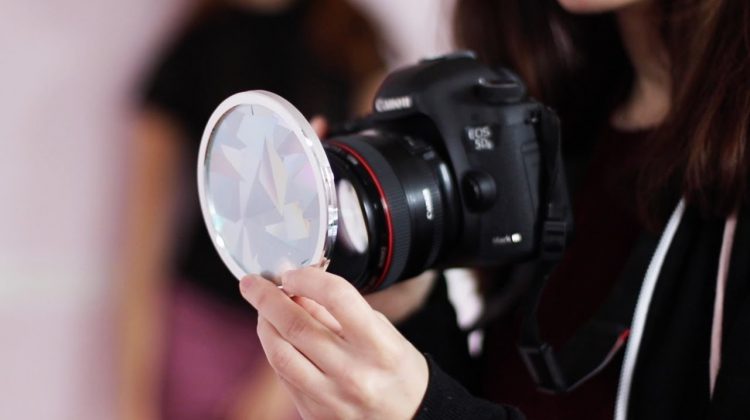
All those pictures of juicy burgers and creamy cakes have been complemented significantly by exuberant photography skills. Businesses like restaurants, food trucks, bakeries, and grocery stores rely on the strength of their photography for fast food promotions. It is of utmost importance that a photo impeccably captures the essence of a dish.
Tricks To Food Photographer Capture Appetizing Cooking Pictures
Knowing that a picture can speak a thousand words about your dish, it is essential to ensure that your food photography is flamboyant.
There is always a misconstruction that professional-looking food pictures always involve a professional photographer or investing in expensive cameras. Professional-looking photographs can be shot even on a good smartphone camera with the right expertise.
It all comes down to these four mentioned vital points to help you achieve a perfect shot of your exotic dish so you can flaunt about it on social media or YouTube –
1. Plating – Preparing Your Food For a Photograph
Plating means to arrange your food on the plate beautifully, so it looks creative and arouses your taste buds.
when it comes to photographing it. The first idea is to make the dish look as juicy and mouthwatering as possible.
There are certain factors to consider while plating –
- Realize Your Aesthetic
If the food is more natural-looking (a salad or a soup), being chaotic and messy would be preferable. However, you must arrange it in ways that might appear dirty but have a strange order to it.
InVideo is an online photo and video editing platform where you can understand how to make a video with photos and music and captivate your audience with content that inspires.
In case your food is something unique like rainbow smoothies or blueberry cheesecakes, you must be neat and precise. A subtle balance of colors and precision of lines is what defines these exotic food items.
- Pick a Ground
Surfaces like wooden cutting boards or picnic tables would be best suited for presenting items like burgers and finger-chips.
Unusual food items, on the other hand, can make use of classic white plates to make them appear more vibrant. Surface and plates must complement the food’s aesthetic.
- Be Creative
The best way to plate food is to begin from the middle and work your way out to provide symmetry.
You can use spoons, squeeze bottles, forks, and dining fabric to decorate their food precisely with no room for redundancy. You can also try using sauces or food coloring to provide vibrancy.
2. Lighting – Providing Contrast between light and Shades
Good lighting helps bring out textures and color balance to your food item. It all comes down to knowing which specific parts of food would you prefer to give more emphasis.

You need to take into account the following factors –
- Side Lighting
Lighting from the side of your food enunciates the shadows and bright areas of certain food textures. While photographing food with tons of textures and Contrast like sandwiches and burgers, this trick can be useful.
- Avoid Harsh Shadows
Harsh shadows can be off-putting and completely ruin a perfect shot while trying to bring out the intricate textures. Try adjusting the angle of either your light or camera to eliminate unwanted shadows and bring out the food texture.
- Use a Diffused Light Source
Softer lighting is the key to eliminating harsh shadows and for this you can use Softbox lighting.
Consider clicking pictures of your food near a window on an overcast if you intend to use natural light.
Use a reflective surface to diffuse natural light onto your food and create a perfect lit ambiance.
3. Composition – Framing Your Perfect Shot
Once you have plated your food, decided the perfect lighting, it’s time to choose a suitable frame.
There are many ways to frame a food picture, some of which are mentioned below that can help you bring out vivid colors and fantastic Contrast in your dish –
- Choosing Angles
Pick an angle that best reflects your food’s hidden textures. Tweak your food item plating a bit to adjust your frame. Food items like salads or a charcuterie board can be represented best while being clicked from overhead.
- Contrasting Colors
Avoid cold and harsh colors like blue or purple as they don’t work well with many food items. Use warm colors like red, orange, or yellow as they can trigger sensory reactions in the brain that can stimulate the appetite.
4. Editing – Add-Ons and Effects To The Clicked Photograph
You have plated the food beautifully and clicked your perfect shot. Despite clicking a chance that already looks amazing, you should always touch it up to conjure up the authentic flavors of the photograph.
You can follow these editing tips for your food picture –
- Sharpen It Up
Your final image should be sharp, which can are attainable by using a steady camera and crisp lighting. Adjustments to the sharpness of the image can make the edges more pronounced and help differentiate between various layers.
- Adjust the White Balance
White balance adjustment can make the image look warmer or cooler. This can induce appetite and mouthwatering sensations the way you want them to.
- Tweak Saturation
You can also slightly increase the saturation of your pictures. Saturation refers to the intensity of colors in your photograph. You can adjust which colors should look brighter and which ones less vibrant. The cameramen were very much limited in the show, and hence it was important for the cameramen to focus on purchasing a camera that had the best angles and could cover all the sides of the show. On that note, if one is looking to buy the best camera for themselves, they must give this a try Best DSLR cameras for Beginners.
Final Words | Food Photographer
Food photography is an art, not rocket science, be creative. The guidelines mentioned above can help you click better pictures of your food.
You must never stop experimenting with filters, lighting techniques and composition to take your photography skills up a notch.
You can be innovative by using food to sculpt a landscape or making desserts to resemble cute animals. The bottom line is to be smart and creative.

